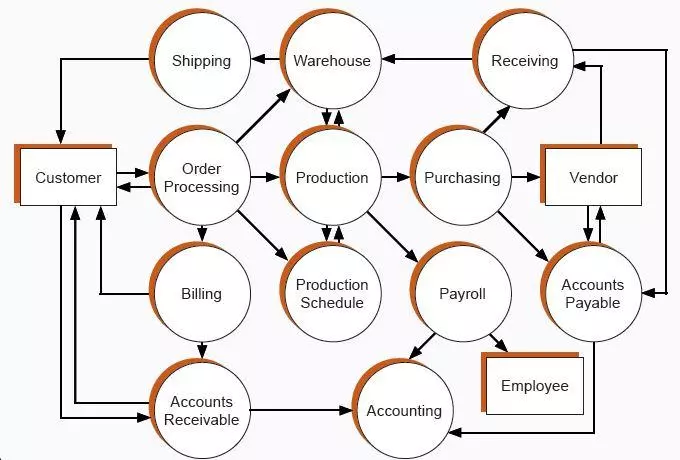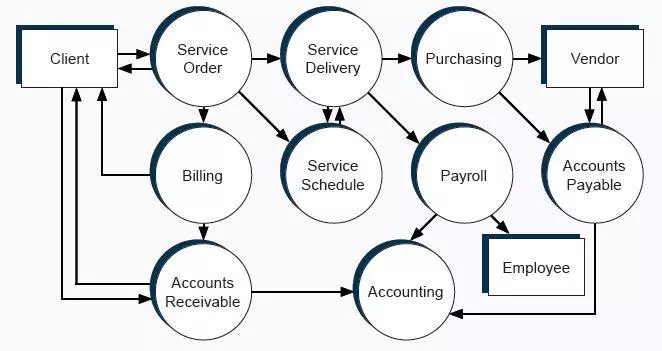When would you rather find the rocks in your business – now, when you have the time and resources to adjust course, or later, when you don't?

Several years ago, I wrote a newsletter titled Rafting When the Water is Low. In it, I compared running a business with rafting – how things are easy when the water is high (revenues are strong), yet hard when the water is low (revenues are down).
Strong revenues hide weaknesses and threats, yet the companies who perform the best are the ones whose managers consistently execute the company's strategy, and preparing for low water helps them outperform their peers. Good managers are like an experienced river guide – they look ahead, read the river, and adjust course to avoid the rocks.
Reading the River for 2020 and Beyond
While I'm certainly not an economist, I do keep up with economic news. One key point about our current economy – the US is still in its longest-running expansion ... ever. I'm a big believer in "reversion to the mean" meaning that, at some point during an expansion, a downturn will contract the economy so as to average out the economy's performance.
We'll obviously have a downturn at some point. Maybe something will happen in 2020. Maybe a downturn will hold off a couple years. Regardless, one will occur.
The point is, no one can predict the future – the best we can do is be as prepared as we can be for low water.
Finding Your Business' Rocks
Returning to the metaphor in my earlier article, rocks in the river represent the internal weaknesses of, and external threats to, a business. The question is – how can you find the rocks in your business?
Here are a few tips and techniques to consider:
- Assessing Alignment of People, Process, and Technology – We view the tight alignment of people, process, and technology as critical to a business being able to successfully execute its strategy. Inventory your key business areas and ask:
- Technology – How long has it been since I reviewed our technology and its fit for our current business? What course has the vendor charted for its software – and how well does this meet our current and future needs?
- Process – How many tasks are being done in Excel versus through our systems? How many of our management reports are created by rekeying and massaging information from our systems in Excel?
- People – How well have our people responded to new business challenges? If we implement a new ERP (Enterprise Resource Planning) system, how many of our accounts payable clerks have the skills and attitude to become accounts payable analysts?
- Using Design Thinking – Design thinking, as discussed in the excellent book Creative Confidence: Unleashing the Creative Potential Within Us All, by Tom Kelley and David Kelley, is a "human-centered approach to design and innovation" (Creative Confidence, page 15). Walk through, mentally or physically, a key business process – say, Order to Cash – as if you were a client or customer of your business, and ask yourself:How easy are we to deal with?
- How quickly do we respond to customer questions or requests for quotes?
- How well can we deliver against what we promised on a customer order or client commitment?
- Grading Business Areas – Perhaps you want something more visible or tangible to evaluate your business. Here are two charts I've used over the years to illustrate the interrelationships among business functions – one for manufacturing companies (or distribution companies, if you exclude the production operations), and another for service businesses. (I've based these diagrams on those in Accounting Information Systems, 10e, by George H. Bodnar and William S. Hopwood.)
-
- Consider each area in turn, and assign it a grade – either letter grades as in school, or a 3-point or 5-point numeric scale.
- After grading each area, ask yourself – What can be done to improve this grade?


- SWOT and Other Strategic Techniques – A wonderful small (174 pages, sized 4.25" by 7"!) book with a condensed explanation of 50 strategic evaluation techniques is The Decision Book: Fifty Models for Strategic Thinking, by Mikael Krogerus and Roman Tschäppeler. One very nice feature of this book – both the front and back inside covers provide a "visual index" to the techniques, including:
- SWOT (Strengths – Weaknesses – Opportunities – Threats) Analysis
- The Stop Rule
- The BCG (Boston Consulting Group) Box
- Result Optimization
- The Pareto Principle
- The Rumsfeld Matrix
You can use the visual index to help you decide which tools to use – whether you need to focus on doing versus thinking, and whether the emphasis is on yourself or others.
Addressing Your Business' Rocks
Once you've found your business' rocks, how do you go about addressing them? First, you're likely to come up with a number of rocks, so you need to prioritize them. How to do this? Use The Eisenhower Matrix – a 2x2 grid with "Urgent" on the horizontal axis and "Important" on the vertical axis – or a variation showing, for example, "Cost" and "Impact" on the horizontal and vertical axes, respectively. We use the Cost-Impact variation when there are a number of areas for improvement and we have to help the client achieve the biggest bank for the buck.
Second, after you've prioritized them, you've likely come up with some implementation ideas – so develop the goals and parameters for improvement efforts, set an implementation budget for both time and out-of-pocket costs, appoint an internal project champion (which could very well be you) and team members, define some checkpoint dates, and get going.
Finding and Addressing Rocks When Staffing Is Lean
One thing I've consistently seen since the 2008 recession – many businesses were hit hard by that, and had to lay off good employees. As the economy rebounded, businesses have been very reluctant to add staff, doing so only when absolutely needed. The result? Most businesses are currently staffed very leanly. While that's good for profits and positioning for the inevitable next downturn, it means people have very little time for special projects.
If you're such a business, please contact me and we'll develop a way to find and address your rocks in an efficient and effective manner. After all, it's better to find and address your rocks now, rather than be surprised by them when the river is low.
Sincerely,

Todd L. Herman






